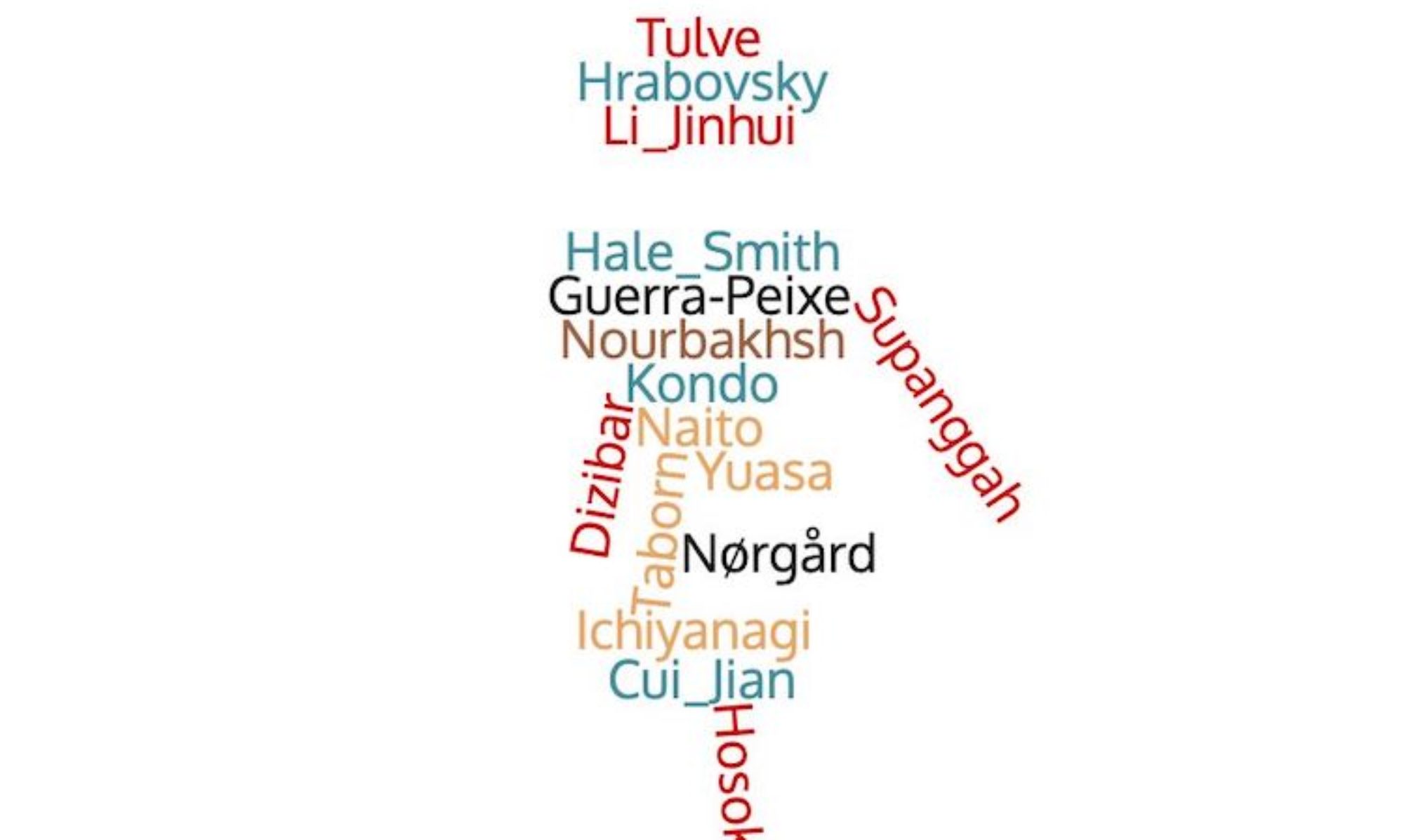By Mao Mengdan and Min Lingkang
This post is part of a series on 100 modern conservatory-trained Chinese composers from 1912 onwards who wrote symphonic, ensemble, and solo instrumental music using Western instruments, as well as choral and solo vocal music, adopting Western tonality or avant-garde techniques. They are regarded as key historical figures in and drivers of modern Chinese music history.
Ma Sicong (May 7, 1912 – May 20, 1987) was a violinist, composer, and music educator from Haifeng, Shanwei, Guangdong. He is regarded as one of China’s first-generation of composers and performers and holds a significant position in the history of modern Chinese music.
Ma began his music education at the age of six when he entered the Pui Ching Middle School attached to a church in Guangzhou. In 1922, his elder brother Ma Siqi, who had returned from France, gave him a violin, which became a lifelong companion.
During his adolescence, Ma had two opportunities to study music in France. The first was from 1924 to 1929, when he initially attended the Nancy Conservatory (then a branch of the Paris Conservatory). In 1926, he moved to Paris to study violin with Paul Oberdoerffer, a soloist at the Paris Opera. In 1928, he was admitted to the main Paris Conservatory to study in Boucherif’s violin studio.
After returning to China in 1929, Ma held solo violin concerts in Hong Kong, Shanghai, Nanjing, and Guangzhou from September to December. At the age of 17, his performances caused a sensation in the music world, and he was hailed as a musical prodigy.
In 1931, with the support of the Guangdong provincial government, Ma went to France again for further study. With the introduction of Oberdoeffer, he studied composition with Bénoni. The following year, he returned to China and became the president of China’s first modern privately established music conservatory, mainly performing in Guangzhou, Hong Kong, Shanghai, Nanjing, and Beijing. He also taught at the Guangzhou Conservatory of Music and the Education Department of Nanjing Central University.
From 1932 to 1936, Ma held solo concerts in Hong Kong, Taiwan (1932), Guangzhou (1933), Shanghai (1934), Hong Kong and Shanghai (1935), and Beijing (1936). Newspapers praised his outstanding performances.
After the outbreak of the Second Sino-Japanese War in 1937, Ma traveled around South and Southwest China, performing frequently and holding positions such as professor at Sun Yat-sen University, conductor of the China Symphony Orchestra, and director of the Guiyang Art Museum.
After the founding of the People’s Republic of China, Ma served as the president of the Central Conservatory of Music and vice-chairman of the Chinese Musicians’ Association for a long time. In 1967, he was targeted under the Cultural Revolution and went into exile in the US, where he passed away from heart disease on May 20, 1987.
Throughout his life, Ma Sicong composed a wide range of works, including symphonies, orchestral suites, piano concertos, sonatas, dances, chamber music, ballets, operas, choral works, songs, and violin pieces. His violin compositions from the 1930s and 1940s, such as “Lullaby” (1935), “First Rondo” (1937), “Inner Mongolia Suite” (also known as “Suiyuan Suite”) (1937), “Tibetan Tone Poem” (1941), “Pastoral Song,” and Violin Concerto in F Major (1944) are among his most influential works. After 1949, he composed three “Rondos” (one in 1950 and two in 1980), “Spring Dance” (1952), “Xinjiang Rhapsody” (1954), “Amis Suite,” “High Mountain Suite” (1973), and “Double Violin Concerto” (1982), making significant contributions to the development of Chinese violin music.
“Nostalgia,” part of Ma Sicong’s “Inner Mongolia Suite” (also known as “Suiyuan Suite”) composed in 1937, is one of his representative works. The theme of the music is derived from the Suiyuan folk song “Running Horses on the City Wall.” In 1937, as Japanese invaders trampled the vast lands of Manchuria and Northern China, students from the Northeast sang “My Home Is on the Songhua River” as they fled to the interior. After traveling through the North, Ma Sicong returned to Guangzhou and was inspired by a Suiyuan folk song to compose “Nostalgia.”
“Nostalgia” is in ternary form with variations in the middle section, contrasting in dynamics, tempo, tone color, tonality, and mood. The first theme is a slow, song-like melody that expresses the longing for one’s hometown felt by those far from home. The theme directly uses the melody of the Inner Mongolian folk song “Running Horses on the City Wall,” consisting of four short, equal phrases, each forming a descending wave-like line. The soft color of the pentatonic re-mode gives the melody a nostalgic and sorrowful tone.
The second theme is warm, set in E pentatonic do-mode, with a gradually accelerating rhythm. Double stops introduce a new melody, increasing the intensity and emotion, as if recalling happy times in the past.
The third theme portrays a lively childlike image, reminiscent of joyful childhood moments. While using the traditional ternary form, the piece also employs the variation technique common in folk compositions, reflecting a structure that combines the principles of ternary form and variation form.
The three variations in the piece not only bring the theme new images but also progressively heighten the emotions. The first and second variations reveal aspects of the theme through changes in mode, rhythm, and pitch range. The third variation is the climax of the piece, with significant changes in internal structure, melodic density, tonality, and tempo, giving the music a lively and bright atmosphere.
The piece ends with a brief conclusion. The final chord, a dominant chord in pentatonic la-mode, allows the feeling of longing to linger.
You can watch a performance of Ma Sicong’s “Nostalgia” at the following link: https://www.bilibili.com/video/BV1Rg4y1q7Nf?share_source=copy_web&vd_source=4681f0684a5c74dd125d397ca5882ba3
